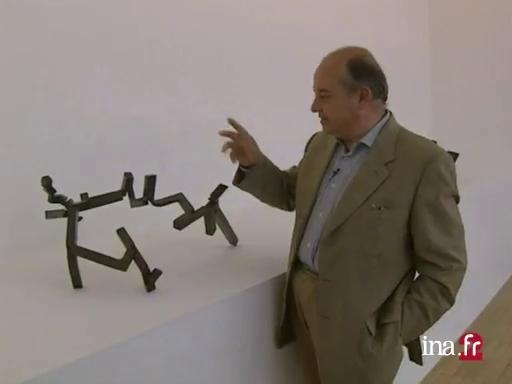Eduardo Chillida

Information
Report on metal sculptor Eduardo Chillida's work, on the occasion of an exhibit dedicated to him at the Musée du Jeu de Paume, in Paris.
Context
Born and died in San Sebastian, Eduardo Chillida (1924 - 2002) owes much of his artistic identity to Basque Spain. After having started his architecture studies Chillida went to Paris to dedicate himself to sculpture and there he met Constantin Brancusi, Antoni Tapies and Pablo Palazuelo, who remained an unwavering friend. If his first sculptures were stylised silhouettes inspired by Cycladic art, the artist quickly turned towards abstraction. Recognition wasn't far behind and in 1958 he received the Grand Prize for Sculpture at the Venice Biennial.
In the 1970s his work was characterised by monumental pieces, a lot of which in forged iron in the purest of Basque ironmonger tradition. His massive, contorted tubular compositions highlighted space through knots. They have been internationally commissioned, from the Berlin Chancellor's office, to the UNESCO headquarters in Paris as well as the World Bank in New York.
Chillida would develop a large body of graphic work in parallel, essentially made from engravings putting the accent on white and the opposition to fullness and emptiness. Interested by the thoughts of the philosopher Heidegger, Chillida worked with him to complete the pieceArt and Space(1968). Martin Heidegger, Emilie Cioran and Octavio Paz in particular have written about the man and his creations.


